![Top 20+ React Interview Questions and Answers [2025] 1 Post thumbnail](https://www.guvi.in/blog/wp-content/uploads/2022/01/Top-20-React-Interview-Questions-and-Answers.png)
Top 20+ React Interview Questions and Answers [2025]
Jul 02, 2025 8 Min Read 9207 Views
(Last Updated)
React ranks among the most in-demand skills Frontend Developers need in 2025. And since pretty much everything needs React, I’m sure you’d like to master the skill so that you can build your dream career.
And for that, you’re going to have to sit through multiple interview rounds before you can finally land the job of your dreams. Companies actively look for skilled React developers, which explains the growing popularity of React certification.
To make preparation easier for you, I’ve put together 30 React interview questions to help you prepare better. These questions cover simple, intermediate, and advanced concepts. You’ll learn everything about React Fragments, Hooks, key props, and other core topics that come up often in interviews. Let’s begin!
Table of contents
- Beginner-Level React Interview Questions and Answers (For Freshers and Entry-Level Candidates)
- What is React?
- What are React's features?
- What sets Class Components apart from Functional Components?
- What is JSX and why is it used in React?
- What is a Component in React?
- What are Props in React?
- What is the State in React?
- What is the Virtual DOM and how does it improve performance?
- How do you create a React application?
- What is the difference between State and Props in React?
- Intermediate-Level React Interview Questions and Answers (For 1-3 years experience)
- 11) What are React Hooks and why were they introduced?
- 12) What is the difference between useEffect and useLayoutEffect?
- How does the Context API help in React applications?
- What is the difference between controlled and uncontrolled components?
- What are keys in React and why are they important?
- How does React handle reconciliation?
- What is the purpose of useMemo and useCallback?
- How is routing handled in React?
- What are higher-order components (HOC) in React?
- What is prop drilling and how can it be avoided?
- Advanced-Level React Interview Questions and Answers (For 3+ years experience)
- What is React Fiber, and how does it improve rendering?
- How does react handle reconciliation?
- What is Context API and when should you avoid using it?
- What is Server-Side Rendering (SSR), and what are its pros and cons?
- What is hydration in React, and why is it important in SSR?
- React Coding Challenges
- Concluding Thoughts…
Beginner-Level React Interview Questions and Answers (For Freshers and Entry-Level Candidates)
Your first React job interview might seem daunting. The good news is that most interviewers test beginners on simple concepts rather than complex implementations. Here are the most common React interview questions you’ll face as a fresher or entry-level candidate.
![Top 20+ React Interview Questions and Answers [2025] 2 Beginner Level React Interview Questions and Answers@2x](https://www.guvi.in/blog/wp-content/uploads/2025/04/Beginner-Level-React-Interview-Questions-and-Answers@2x-1200x630.png)
1. What is React?
React is a front-end JavaScript library that Facebook created to build user interfaces, mainly for single-page applications. Unlike complete frameworks, React helps developers create reusable UI components that update smoothly when data changes.
React stands out in the front-end ecosystem. It lets developers build complex and interactive user interfaces through a component-based approach. Facebook first used it on their news feed in 2011. Instagram adopted it in 2012, proving it could handle high-traffic applications effectively.
2. What are React’s features?
React has several standout features that developers love:
- JSX (JavaScript XML): This syntax extension lets you write HTML-like code right in your JavaScript. Your code becomes easier to read and understand.
- Virtual DOM: React keeps a lightweight copy of the real DOM in memory. This improves performance by updating only what’s needed. React compares the virtual DOM with its previous state and changes just the necessary parts.
- Component-Based Architecture: You build React applications using components – independent, reusable code pieces that return HTML through JSX. This makes applications easier to develop and maintain.
- One-way Data Binding: Data flows from parent to child components in one direction. This makes data handling simpler and reduces complexity.
- Declarative Approach: You describe your UI’s desired state, and React handles the DOM updates when data changes.
3. What sets Class Components apart from Functional Components?
React components can be written as either class components or functional components:
Class Components are JavaScript ES6 classes that extend React.Component. They have access to features like state and lifecycle methods using this keyword.
class Welcome extends React.Component {
render() {
return <h1>Hello, {this.props.name}</h1>;
}
}
Functional Components are plain JavaScript functions. Before React 16.8, they were mostly used for presenting static content. But with the introduction of hooks, they can now hold state, handle side effects, and mimic lifecycle behavior.
function Welcome(props) {
return <h1>Hello, {props.name}</h1>;
}
Today, functional components with hooks are the standard because they are shorter, easier to read, and promote cleaner code.
4. What is JSX and why is it used in React?
JSX (JavaScript XML) is a syntax extension that allows developers to write HTML-like tags inside JavaScript. It’s not mandatory in React, but it makes writing UI components easier and more readable.
Instead of writing:
React.createElement('h1', null, 'Hello World');
You can use JSX:
<h1>Hello World</h1>
JSX is then transpired by Babel into regular JavaScript code that browsers can understand. It helps bring structure to the UI code and reduces clutter in your logic.
5. What is a Component in React?
A component in React is a reusable block of code that encapsulates logic, UI, and styling. Every React application is made up of a hierarchy of components.
There are two types:
- Presentational (Stateless) Components – Focus only on displaying UI.
- Container (Stateful) Components – Manage data and business logic.
Example of a simple functional component:
function Button() {
return <button>Click Me</button>;
}
You can also nest components inside one another to build complex UIs from simple, reusable parts.
6. What are Props in React?
Props (short for properties) are read-only data passed from a parent component to a child component. They allow components to be dynamic and reusable.
For example:
function Welcome(props) {
return <h1>Hello, {props.name}</h1>;
}
// Used as:
<Welcome name="John" />
Props:
- Are immutable (cannot be changed by the child component).
- Allow parent-child communication.
- Can pass any data type (strings, arrays, functions, even components).
Props help keep components stateless and make the UI declarative.
7. What is the State in React?
A state is an object that holds the dynamic data of a component and determines how the component behaves. It is local to the component and can change over time, causing the component to re-render.
In class components, the state is accessed via this.state and updated using this.setState(). In modern React (functional components), the state is managed using the useState hook:
const [count, setCount] = useState(0);Whenever you update the state using setCount, React re-renders the component with the new value. This makes it easy to reflect changes in the UI.
8. What is the Virtual DOM and how does it improve performance?
The Virtual DOM (VDOM) is a concept where React creates an in-memory copy of the actual DOM. When changes are made (e.g., updating the state), React:
- Creates a new Virtual DOM.
- Compare it with the previous version using a diffing algorithm.
- Identifies the minimal number of changes.
- Updates only those parts of the real DOM that have changed.
This process is called reconciliation, and it makes React extremely fast compared to direct DOM manipulation, which is expensive and slow.
9. How do you create a React application?
To create a new React app, you can use the official tool Create React App (CRA). It sets up a modern development environment with zero configuration.
Steps:
- Install Node.js and npm.
Run the following command:
npx create-react-app my-app- Navigate into the project and start the development server:
cd my-app
npm startThis will start a local server (usually on http://localhost:3000) and display your default React application in the browser.
10. What is the difference between State and Props in React?
| Property | State | Props |
| Definition | Internal data managed by the component | External data passed to the component |
| Mutability | Mutable | Immutable |
| Ownership | Controlled within the component itself | Controlled by parent components |
| Use Case | Tracking component behavior (e.g., toggles, counters) | Passing configuration or data from parent |
Think of state as the memory of the component, while props are the instructions it receives from the outside world. Together, they help you create dynamic and interactive interfaces.
Would you like to start learning React but aren’t sure about online courses yet? Well then our React e-book will be the perfect place for you to begin! Start reading now.
Intermediate-Level React Interview Questions and Answers (For 1-3 years experience)
The basics of React are just the beginning. Job interviews will test your deeper understanding of React concepts. Developers with 1-3 years of experience should feel confident tackling complex React topics.
![Top 20+ React Interview Questions and Answers [2025] 3 Intermediate Level React Interview Questions and Answers@2x](https://www.guvi.in/blog/wp-content/uploads/2025/04/Intermediate-Level-React-Interview-Questions-and-Answers@2x-1200x630.png)
11) What are React Hooks and why were they introduced?
React Hooks let you use state and other React features in functional components without classes. The React team introduced them in version 16.8 to solve several challenges developers faced with class components.
Back then, we called functional components “stateless components” because they couldn’t handle state or access lifecycle methods. Developers had to switch to class components just to manage state or use lifecycle methods. This made the code more complex than needed.
Hooks brought several benefits:
- You can reuse stateful logic between components
- Related code stays together instead of spreading across lifecycle methods
- React features work without classes
- Components become easier to understand and test
Most developers use useState for state management, useEffect for side effects, useContext to consume context, and useRef to work with DOM elements directly.
12) What is the difference between useEffect and useLayoutEffect?
Both useEffect and useLayoutEffect allow you to perform side effects in functional components, but they differ in timing and use case.
- useEffect runs after the DOM has been painted. It’s ideal for operations that don’t affect layout, like fetching data or subscribing to services.
- useLayoutEffect runs synchronously after the DOM has been mutated but before the browser paints, which means it’s used when you need to measure layout or perform DOM updates that must happen before the user sees anything (e.g., for animations or scroll positioning).
Using useLayoutEffect unnecessarily can lead to performance issues and blocking rendering, so use it only when layout measurement or synchronous updates are critical.
13. How does the Context API help in React applications?
The Context API provides a way to share values like themes, user information, or app settings across a component tree without manually passing props at every level.
It consists of three parts:
- React.createContext() to create a context object.
- A Provider to supply the context value.
- A Consumer or useContext hook to access that value in nested components.
This reduces “prop drilling,” improves readability, and centralizes the management of shared state. It’s perfect for small to medium-scale state sharing; for complex global state management, tools like Redux or Zustand may be better suited.
14. What is the difference between controlled and uncontrolled components?
In React forms, a controlled component is one where form data is handled by the React state. Every change to the form input triggers a state update, making the input’s value bound to the component’s state.
<input type="text" value={inputValue} onChange={e => setInputValue(e.target.value)} />An uncontrolled component, by contrast, relies on the DOM to maintain its own state internally. You access the input’s value using a ref (useRef).
Controlled components give more control and are easier to validate, but they may become verbose. Uncontrolled components are useful when you don’t need real-time updates, like in simple form submissions or third-party libraries.
15. What are keys in React and why are they important?
Keys are used to uniquely identify elements in a list. React uses these keys during its reconciliation process to determine which items have changed, been added, or removed. This minimizes re-renders and boosts performance.
For example:
{items.map(item => <li key={item.id}>{item.name}</li>)}Without a stable key, React may unnecessarily re-render or reorder DOM elements. Using index as a key is discouraged if the list order changes dynamically, as it can cause unexpected rendering behavior.
16. How does React handle reconciliation?
Reconciliation is React’s process of updating the DOM efficiently when the component state or props change. React maintains a virtual DOM, which is a lightweight copy of the real DOM.
When a component updates, React:
- Creates a new virtual DOM tree.
- Compare it with the previous tree (diffing).
- Calculates the minimum number of operations needed.
- Applies these operations to the real DOM (commit phase).
This process avoids full DOM re-renders, improves speed, and ensures UI updates are fast and smooth. Understanding reconciliation helps optimize rendering logic and avoid unnecessary renders.
17. What is the purpose of useMemo and useCallback?
These hooks are used for performance optimization:
- useMemo caches the result of a computation so that it only recomputes when dependencies change. Useful when doing expensive calculations.
const memoizedValue = useMemo(() => computeExpensiveValue(a, b), [a, b]);- useCallback returns a memoized version of a function, preventing it from being recreated on every render unless its dependencies change. This is useful when passing functions to child components to avoid unnecessary renders.
const handleClick = useCallback(() => doSomething(id), [id]);They help reduce re-renders and unnecessary processing, especially in large or complex components.
18. How is routing handled in React?
React doesn’t have built-in routing but uses the popular react-router-dom package to create single-page applications (SPAs). It handles navigation by updating the URL without reloading the page and rendering the appropriate components.
Basic usage:
<BrowserRouter>
<Routes>
<Route path="/" element={<Home />} />
<Route path="/about" element={<About />} />
</Routes>
</BrowserRouter>
React Router provides tools like:
- <Link> for navigation without refresh
- <Navigate> for redirection
- useParams, useNavigate, useLocation for dynamic routing and navigation control
It ensures seamless navigation and a dynamic user experience without full page reloads.
19. What are higher-order components (HOC) in React?
A higher-order component is a function that takes a component and returns a new component with enhanced capabilities. It’s a pattern for reusing component logic across multiple components.
Example:
const withLogger = (WrappedComponent) => {
return (props) => {
console.log('Props:', props);
return <WrappedComponent {...props} />;
};
};
HOCs are often used for:
- Authentication wrappers
- Logging
- Permission checks
- Injecting additional props
However, they’ve become less common with the advent of Hooks, which allow similar logic sharing in a more modular and composable way via custom hooks.
20. What is prop drilling and how can it be avoided?
Prop drilling happens when you pass data through several intermediate components that don’t need it, just to reach a deeply nested component.
Example:
<Parent>
<Child>
<GrandChild data={data} />
</Child>
</Parent>This creates tight coupling between components and makes maintenance harder. It can be avoided by:
- Using React Context API to make the data globally accessible.
- Applying Redux or Zustand for global state management.
- Using custom hooks to encapsulate logic and data access.
By reducing prop drilling, you simplify the component tree and make your codebase easier to scale and maintain.
Advanced-Level React Interview Questions and Answers (For 3+ years experience)
Senior React developers face questions that explore deeply into the library’s core concepts and advanced patterns. These questions test your understanding of React’s architecture and optimization techniques crucial for large-scale applications.
![Top 20+ React Interview Questions and Answers [2025] 4 Advanced Level React Interview Questions and Answers@2x](https://www.guvi.in/blog/wp-content/uploads/2025/04/Advanced-Level-React-Interview-Questions-and-Answers@2x-1200x630.png)
21. What is React Fiber, and how does it improve rendering?
React Fiber represents a complete rewrite of React’s core reconciliation algorithm that came with React 16. The new version improves upon the previous stack reconciler by breaking rendering work into smaller, incremental chunks. These chunks can be paused, resumed, or stopped based on priority.
Fiber improves rendering through:
- Incremental rendering: Work splits into smaller units across multiple frames to prevent UI freezes
- Priority scheduling: User interactions get processed before less important tasks
- Better concurrency: The system pauses and resumes work to keep the interface responsive
This new architecture keeps the main thread clear during heavy updates. The result is smoother animations and better responsiveness, which becomes crucial in complex applications.
22. How does react handle reconciliation?
React uses reconciliation to update the DOM efficiently when components change. The process compares the new Virtual DOM against the previous version to find the smallest needed changes.
The algorithm works on these principles:
- Element type comparison: Different elements create different trees. A change from div to span rebuilds the entire subtree
- Key-based optimization: The key prop helps track and update list items efficiently
- Efficiency heuristics: The system uses an O(n) algorithm instead of the theoretical O(n³) complexity of tree comparisons
The diffing algorithm makes smart assumptions to boost performance. It assumes different element types generate different trees and lets developers mark stable elements with keys.
23. What is Context API and when should you avoid using it?
Context API shares data between components without passing props through every level. It creates a central store for data that many components need.
Context works with:
- A Provider making data available downstream
- A Consumer (or useContext hook) accessing that data
Context API might not fit when you:
- Have frequent state updates that trigger re-renders in all consumers
- Need state management in large apps where Redux might work better
- Pass data down just a few levels where props work fine
- Handle app-wide state better suited for dedicated solutions
You can create multiple contexts for different parts of your app instead of one global context.
24. What is Server-Side Rendering (SSR), and what are its pros and cons?
SSR is when the HTML is rendered on the server, sent to the browser, and then hydrated to become interactive.
Pros:
- Faster initial page loads, especially on slower devices or networks.
- Better SEO since search engines see fully-rendered content.
- Improved perceived performance.
Cons:
- Increases server load and complexity.
- Requires hydration, which can be error-prone if client and server HTML mismatch.
- Some client-side behaviors (e.g., window objects) aren’t available during server rendering.
Tools like Next.js make SSR easy in React by handling routing, rendering, and caching automatically.
25. What is hydration in React, and why is it important in SSR?
Hydration is the process of attaching event listeners and React logic to static HTML that was pre-rendered on the server. When a page uses SSR, it sends fully-formed HTML to the browser. Hydration then activates React on top of that markup so it becomes interactive.
React does not re-render the HTML from scratch—it reuses the existing markup. However, if there’s a mismatch between the server-rendered HTML and what the client expects, hydration errors occur. This can lead to bugs or unresponsive UI.
Ensuring that both server and client render the same HTML is crucial for successful hydration.
React Coding Challenges
React developers need more than just theory to ace their interviews. They should know how to turn concepts into working code and solve problems effectively.
![Top 20+ React Interview Questions and Answers [2025] 5 Must Know React Coding](https://www.guvi.in/blog/wp-content/uploads/2025/04/Must-Know-React-Coding-Challenges@2x.png)
Technical rounds usually include hands-on coding tests. These evaluate your component design, state management, and optimization skills. Developers who practice these challenges regularly have better success rates in interviews.
Here are some common React coding challenges you’ll see in interviews:
- Building a Todo List: This classic challenge tests your grasp of state management, component structure, and CRUD operations. You might also need to add local storage or sort completed items in advanced versions.
- Creating Interactive Components: You can show your UI state and user interaction skills by building accordions, tabs, or carousels.
- Form Implementation: Forms with validation help you demonstrate your expertise with controlled components and state management.
- Data Fetching: API integration challenges let you show your skills with async operations and handling loading/error states.
- Performance Optimization: Advanced React concepts come into play when you implement infinite scrolling or optimize render performance.
Component challenges like pagination, progress bars, and filterable product lists are great practice materials. These match the real-life scenarios you’ll face at work.
Want to master ReactJS and build a high-paying career as a Full-Stack Developer? Check out GUVI’s Full Stack Development Course, where you’ll learn React, Node.js, MongoDB, and more with hands-on projects, expert mentorship, and placement support. Perfect for beginners and professionals looking to upskill.
Concluding Thoughts…
Well as we conclude, your most important takeaway from this article should be that you don’t just need theoretical knowledge but also practical coding skills to ace your React interviews.
And the questions in this article cover everything from simple component structure to advanced performance optimization techniques. They will help you build strong foundations for your React career.
Getting good at these concepts can boost your job prospects by a lot. React developers in India earn between ₹6,00,000 (entry level) and ₹32,00,000 (senior level). Your preparation should blend theory with hands-on coding challenges effectively.
Note that successful React developers learn and adapt to new features and best practices constantly. Begin with simple concepts and move to advanced topics steadily. Regular coding practice builds the confidence you need for React interviews.






















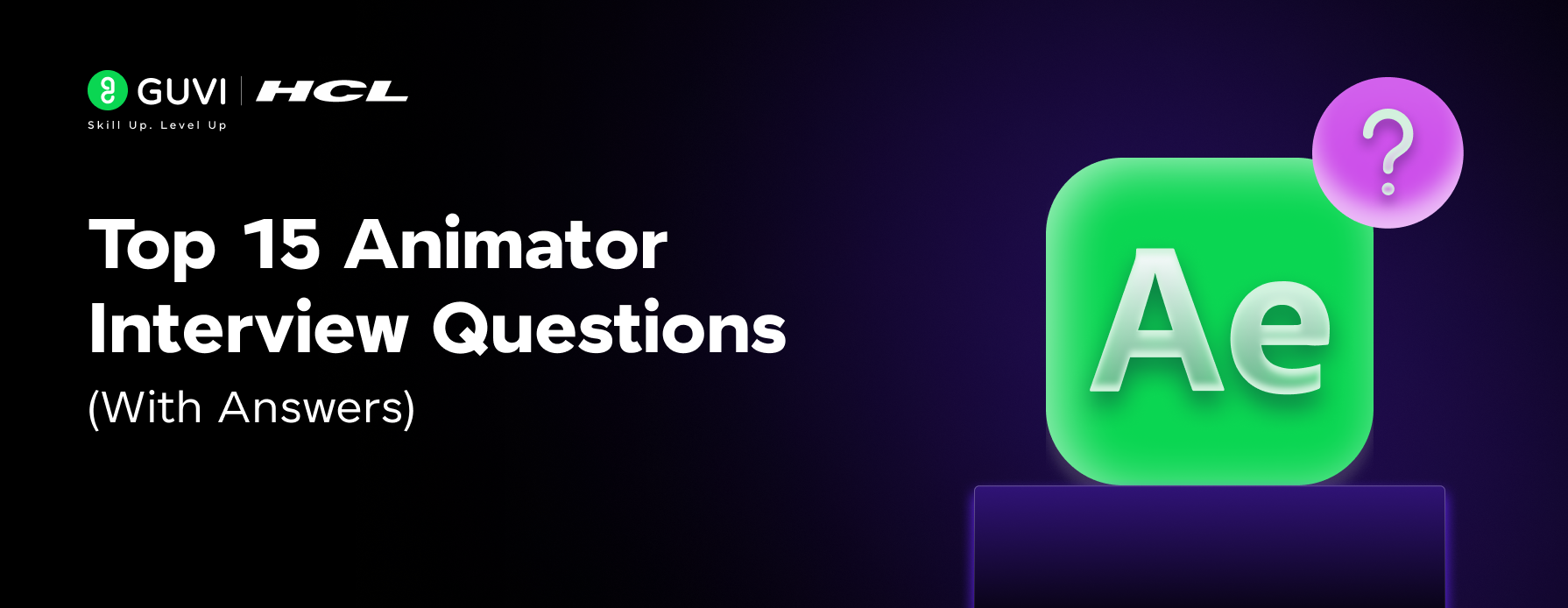


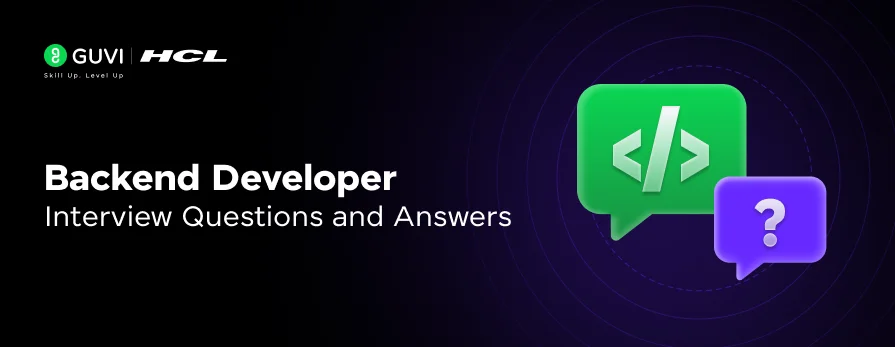
![Top 35+ AWS Interview Questions and Answers [2025] 11 aws interview questions](https://www.guvi.in/blog/wp-content/uploads/2025/07/aws-interview-questions.webp)
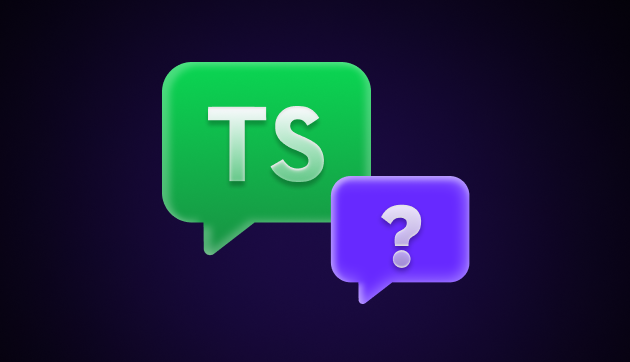
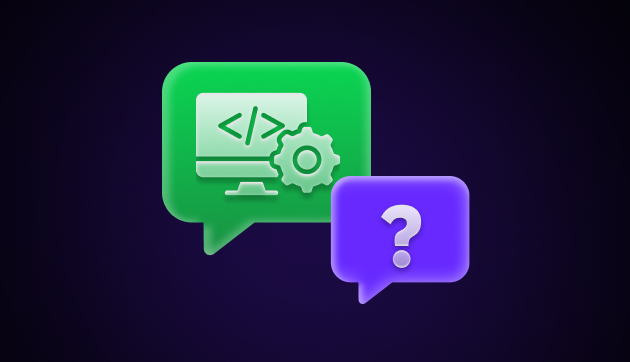
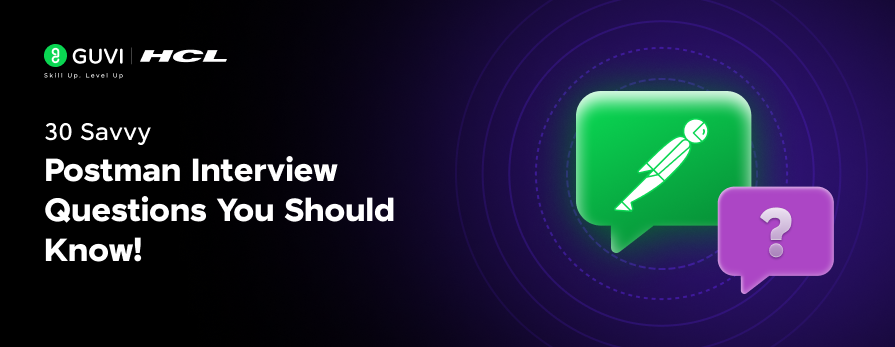

Did you enjoy this article?